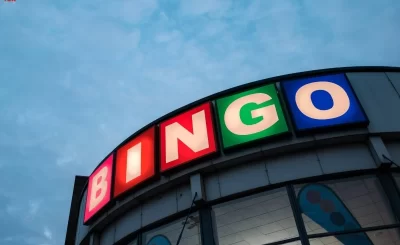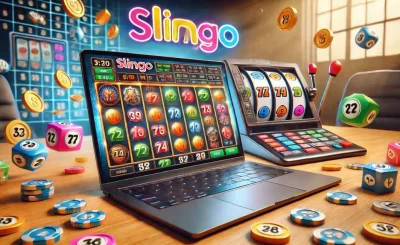When you hear “bingo,” you probably picture a community hall, dabbers, and a stoic caller announcing B-9. It’s a classic. But here’s the deal: the simple human desire to match numbers on a grid is a global phenomenon. And honestly, the ways different cultures have adapted this game are as varied and vibrant as the places themselves.
Let’s take a trip around the world and see how bingo’s core concept gets a local flavor. You might just find your new favorite way to play.
From Italian Piazzas to National Lotteries: The European Evolution
Europe is where it all began, with roots stretching back to a 16th-century Italian lottery called “Lo Giuoco del Lotto d’Italia.” That game, by the way, is still played every Saturday—talk about staying power.
UK’s 90-Ball Bingo: The Classic We Know and Love
This is the granddaddy of modern bingo. Cross the pond to the UK, and you’ll find a game that feels both familiar and distinctly different.
- The Card: A 9×3 grid. That’s 27 numbers. But each row only has five numbers and four blank spaces. It creates a unique pattern for every single game.
- The Gameplay: Numbers are called from 1 to 90. The goal isn’t just one win. Players aim for a single line, then two lines, and finally, the coveted full house—marking off all numbers on the ticket.
- The Vibe: It’s fast, it’s social, and the “two fat ladies” (88) style of callouts adds a layer of charming, quirky fun you just don’t get anywhere else.
Scandinavian & German 5×5 Bingo: A Different Grid
Head north to Sweden or over to Germany, and the game shifts. This is the version that heavily influenced the American style. The card is a 5×5 square. The center space is often a free spot, a little gift to get you started. The numbers are typically called from 1 to 75. It’s a tighter, more condensed game. The patterns to win can be anything from a simple line to complex shapes like diamonds or picture frames, which honestly keeps you on your toes.
A World of Patterns, Speed, and Chance
Now, let’s venture beyond Europe. This is where the game truly transforms, reflecting local traditions and a completely different pace of life.
Mexican Lotería: A Feast for the Senses
If you only explore one bingo variation, make it Lotería. It’s less about numbers and more about a cultural tapestry. Forget a grid of digits; the card is a beautiful 4×4 grid of 16 vibrant images. Think “El Corazón” (The Heart), “La Sirena” (The Mermaid), or “La Muerte” (The Death).
The caller doesn’t just shout a name. They recite a rhyme, a riddle, or a popular saying associated with the image. It’s a performance. The game is slower, more poetic. It’s a social event, often played with raw beans as markers. Winning requires completing a predetermined pattern, and the winner gets to shout “¡Lotería!” with a passion that’s simply contagious.
Indian Tambola: The Need for Speed
In India, bingo is Tambola, and it’s a whirlwind. The ticket has three rows and nine columns, with numbers 1-90 distributed across it. The game is famously fast-paced. But the real magic is in the win conditions. Sure, you can win for a full house, but the early and mid-game prizes are where the excitement is.
| Common Tambola Wins: | What It Means |
| Early Five | First player to mark five numbers. |
| Top Line | Covering all numbers in the first row. |
| Middle Line | You guessed it—the second row. |
| Bottom Line | The third and final row. |
| Four Corners | Marking the four numbers at each corner of the ticket. |
This multi-tiered winning structure means the action is constant. There’s always someone on the verge of shouting “Tambola!”
Chinese & Asian Number Games: A Cultural Resonance
In many East Asian cultures, you’ll find games that, while not called “bingo,” operate on a nearly identical matching principle. Think of Keno, for instance. But the cultural adaptation is subtle and fascinating. Numbers hold immense significance. The number 8 is lucky for prosperity, while 4 is often avoided as it sounds like the word for “death.”
A bingo-style game in this context might use special number sequences or avoid certain digits altogether to align with local beliefs. It’s a beautiful example of how a game molds itself to the soul of a place.
Why This Global Tapestry Matters for Players Today
So, why does all this matter? Well, for starters, it’s a reminder that a great idea is a great idea, no matter where you are. But more practically, exploring these global bingo games can completely refresh your game night.
- Breaks the Monotony: If 75-ball is getting stale, the rhythmic storytelling of Lotería or the frantic pace of Tambola can feel like a whole new world.
- Cultural Connection: It’s a fun, low-stakes way to engage with a different culture. You’re not just playing a game; you’re learning symbols, rhymes, and social customs.
- New Strategies: Different games require different tactics. Do you go for the quick Early Five, or do you patiently wait for that perfect four-corner win? It flexes your mental muscles in a new way.
The Universal Thread
From the piazzas of Italy to the bustling online rooms where players from every continent now meet, the core of bingo remains the same. It’s about anticipation. That shared intake of breath as the next number or image is revealed. The thrill of being one mark away. The joy—or the friendly jealousy—when someone else wins.
The boards and the rules are just the container. The real game is that moment of connection, that little spark of chance we all secretly love. And that, you know, is a language everyone understands.







